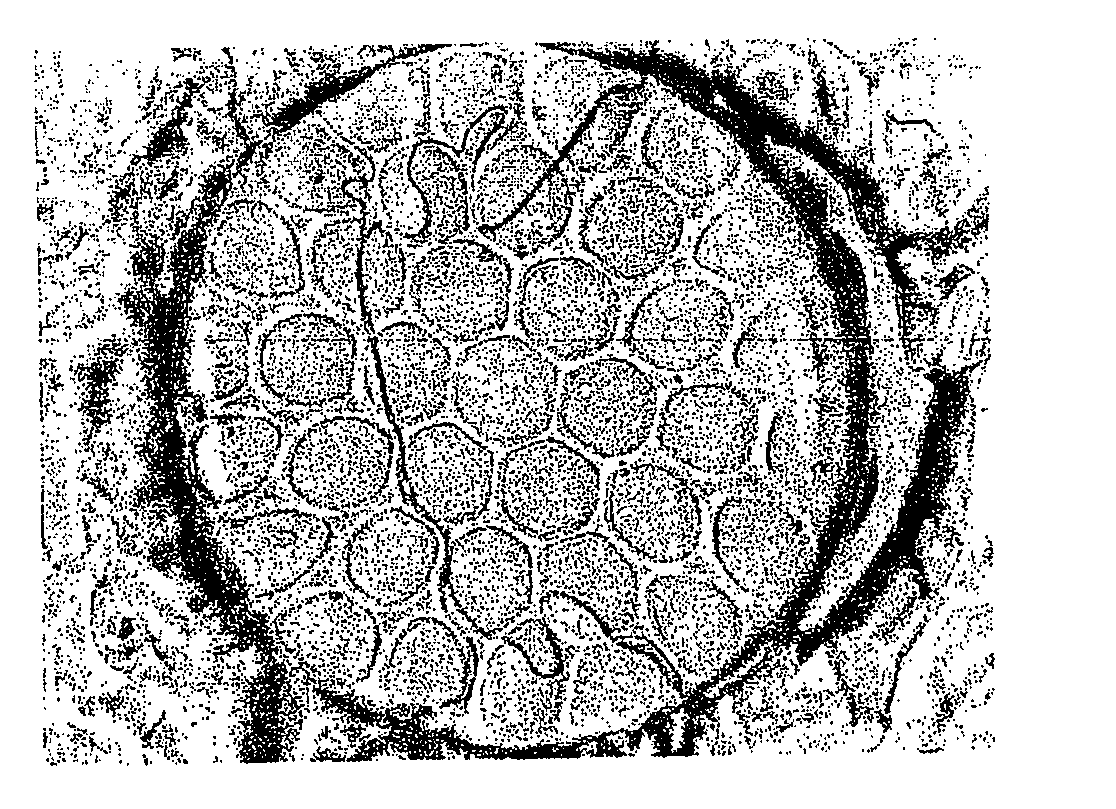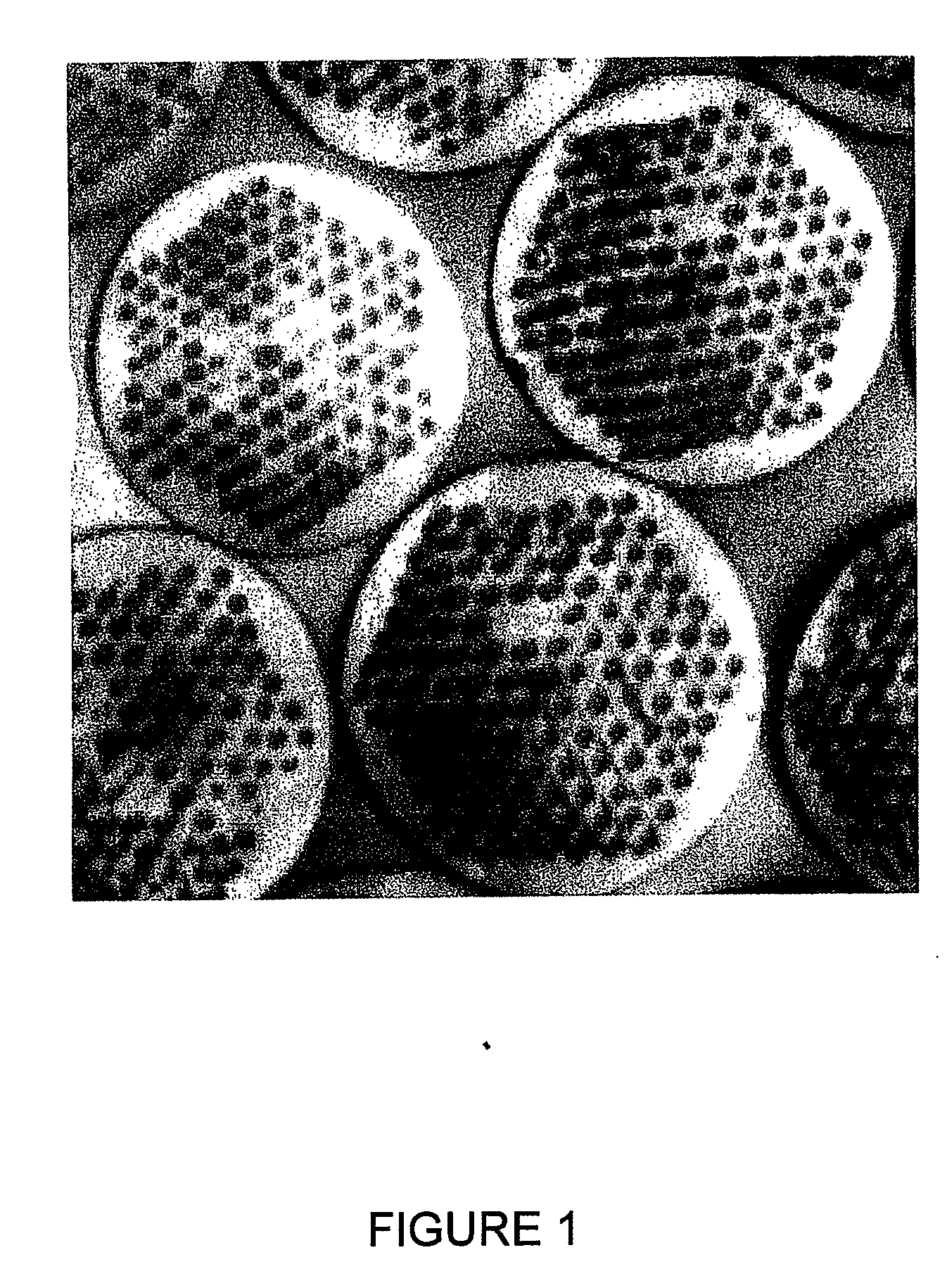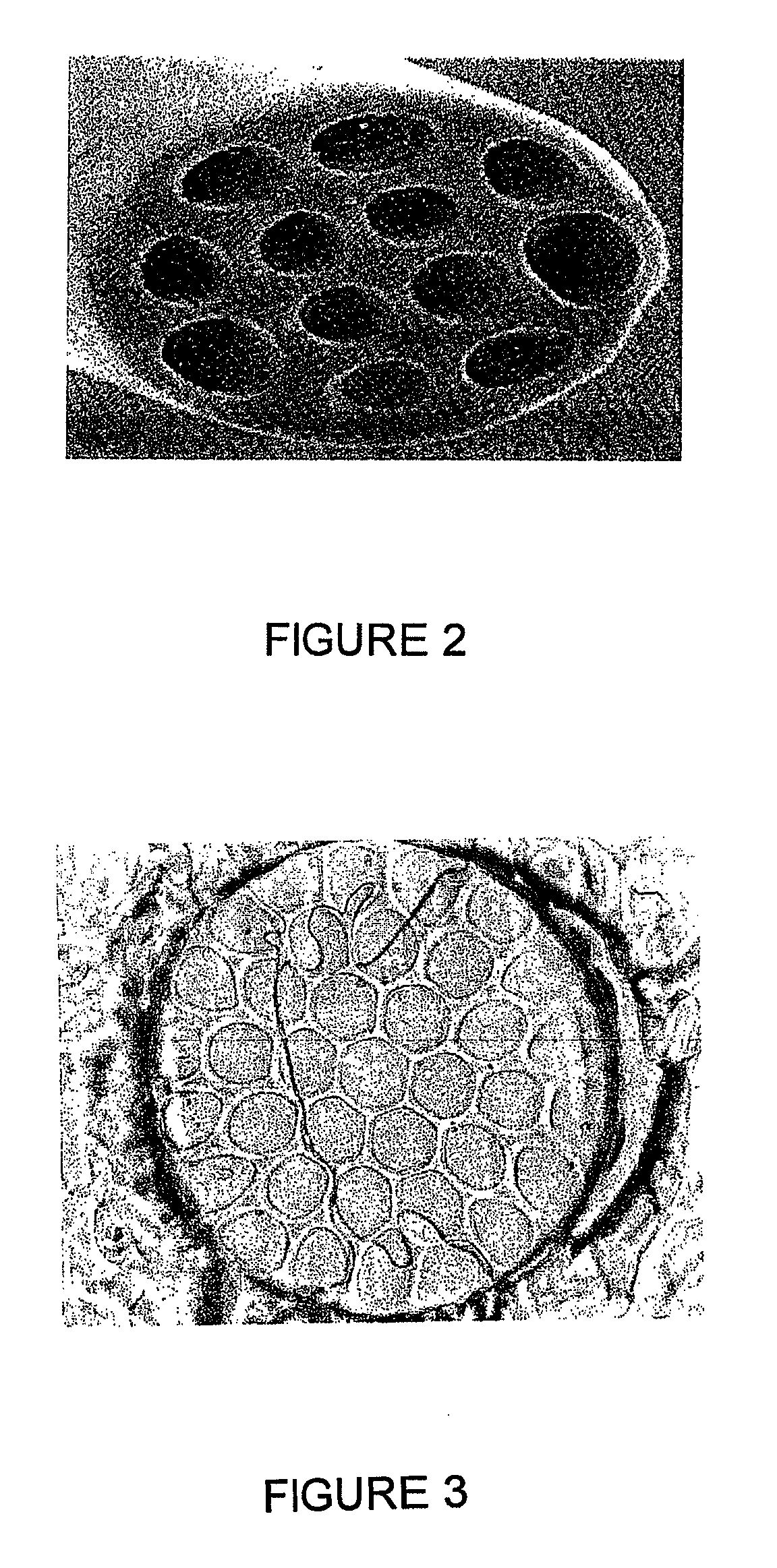Continuous, carbon-nanotube-reinforced polymer precursors and carbon fibers
- Summary
- Abstract
- Description
- Claims
- Application Information
AI Technical Summary
Benefits of technology
Problems solved by technology
Method used
Image
Examples
Embodiment Construction
[0019]In one aspect, the present invention comprises a continuous carbon-nanofiber structure comprising carbon and carbon nanotubes, wherein the nanotubes are substantially aligned along a longitudinal axis of the fiber. In certain embodiments, the continuous carbon nanofiber can be made directly from a melt-spinnable polyacrylonitrile (PAN) precursor. Other embodiments can be made by utilizing a spin pack capable of producing multi-component fibers. In preferred embodiments, the resultant multi-component fibers comprise an islands-in-the-sea configuration, wherein the multi-component fibers comprise a PAN and a fugitive polymer which can be dissociable from the melt spinnable PAN.
[0020]As used herein, the term “fugitive polymer” refers to compounds that can be extracted out of a multi-component fiber after melt spinning, but at any one of several points of the fiber-making process. In general, multi-component fibers are formed of two or more polymeric materials which have been extr...
PUM
| Property | Measurement | Unit |
|---|---|---|
| Temperature | aaaaa | aaaaa |
| Fraction | aaaaa | aaaaa |
| Fraction | aaaaa | aaaaa |
Abstract
Description
Claims
Application Information
 Login to View More
Login to View More - R&D
- Intellectual Property
- Life Sciences
- Materials
- Tech Scout
- Unparalleled Data Quality
- Higher Quality Content
- 60% Fewer Hallucinations
Browse by: Latest US Patents, China's latest patents, Technical Efficacy Thesaurus, Application Domain, Technology Topic, Popular Technical Reports.
© 2025 PatSnap. All rights reserved.Legal|Privacy policy|Modern Slavery Act Transparency Statement|Sitemap|About US| Contact US: help@patsnap.com



